Description of Graf Monte Cristo grapes and cultivation technology
Count of Monte Cristo grapes are popular among gardeners. It features large brush sizes and does not require special care. Suitable for juicing or wine making. Can be used in cooking or fresh consumption.
Hybrid history
The Montecristo grape was developed in the Rostov region. Talisman and Rizamat were used as the basis for this variety. The hybrid was created in the late 90s. It gained popularity very quickly thanks to its juicy berries and easy care.
Description and characteristics of grapes Count of Monte Cristo
The grape variety has distinctive characteristics that are taken into account when planting.
Bush
The bush is large. The vine is flexible and often used as a garden decoration. The vine is dense, can be used to create arches and arbors. The leaves are large, five-lobed.
Fruit
Bunches can weigh up to 1.5 kg. The raceme is elongated, the berries are large with a pink skin. The berries are elongated, the pulp is juicy with a high sugar content.
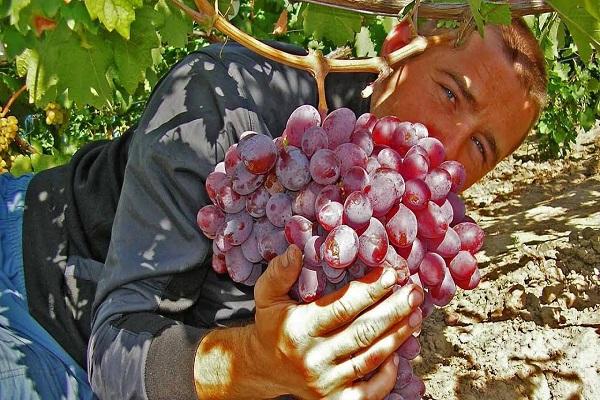
Yield
With proper care, it has a high yield. The yield increases in the 7-8th year after planting.
Maturation
The ripening period depends on the region in which the variety is planted. Most often, the collection period falls on mid-August, early September.
Frost resistance
The plant tolerates diseases well, therefore it can be grown for winter regions. In the first years after planting, it is necessary to cover the bushes.
No shelter is needed for an adult plant.
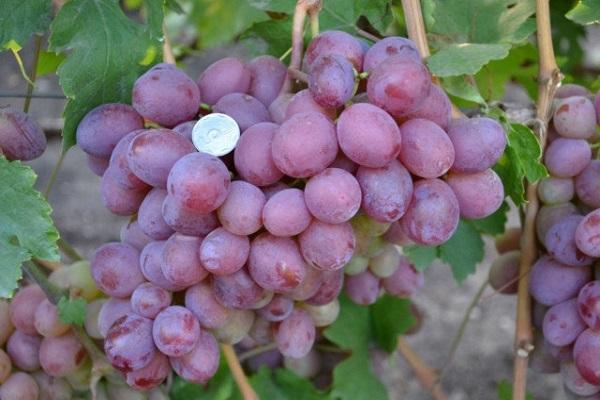
Advantages and disadvantages of the variety
When planting a plant, the following advantages must be considered:
- ripens quickly;
- taste qualities;
- suitable for storage;
- the dense skin of the fruit prevents insect damage.
The disadvantages include cracking of the peel under prolonged wet conditions.
The nuances of growing a plant
When growing a variety, it is necessary to take into account some features that can affect the yield.
Landing dates
It is necessary to plant seedlings in early spring before the start of sap flow. Also, seedlings can be planted in mid-September. This period is enough for the plant to prepare for winter.
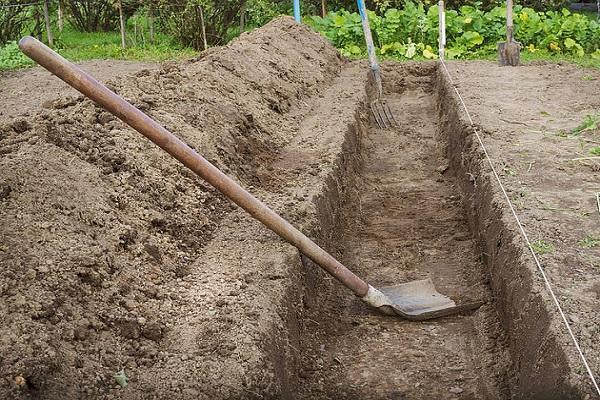
The choice of planting material
When choosing seedlings, the following features must be considered:
- planting material must have at least 4 buds;
- the roots should be light in color and free from rot and damage.
It is necessary to purchase planting material in specialized places that have repeatedly proved the quality of their goods.
Selecting and preparing a landing site
The grape planting site should be in a sunny location. The groundwater level should be neutral. The grape prefers soil with nitrogen. On a clay type soil, it requires regular fertilization.
The site for planting grapes must be cleared of stones and grass. Dig up and prepare the landing hole. The depth of the hole must be at least 60 cm.
Important. In order for the seedling to take root quickly, it is necessary to prepare the following type of nutrient soil: 1 part of soil, 1 part of humus and 0.5 part of sand.
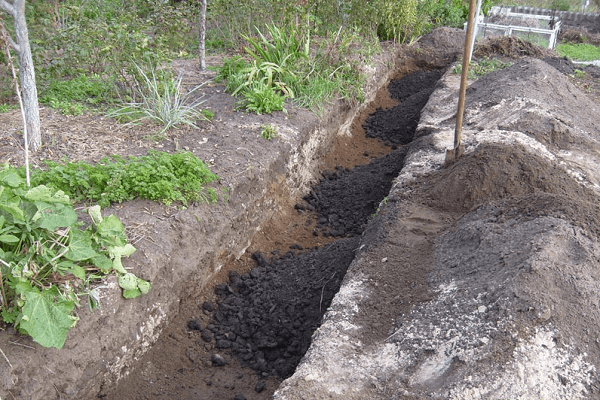
Landing technology
Planting grapes is carried out according to the following algorithm:
- drainage must be laid at the bottom of the pit;
- the roots of the seedling are pruned;
- a ¼ pit is filled with prepared soil mixture;
- install a seedling and spread the roots;
- sprinkle with soil and tamp;
- pour warm water.
During watering, you can dissolve mineral fertilizers in water, 100 grams per bucket of water.
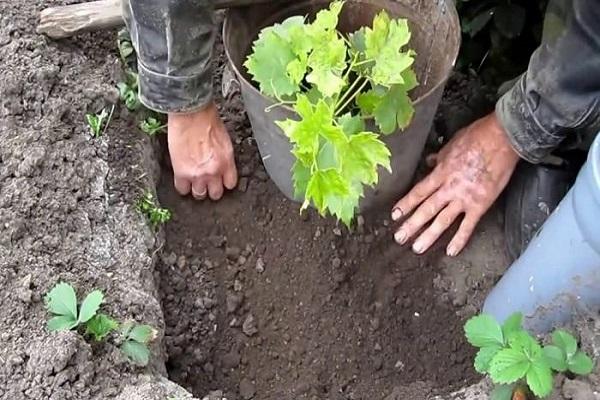
Crop care rules
After planting, it is important to properly care for the crop.
Watering and feeding
Watering is carried out every 3 days. Up to 1 bucket of warm water must be added to one bush. The first top dressing is applied one year after planting. In spring, nitrogen fertilizers are used, in summer complex mineral fertilizers. In autumn, humus is introduced, which saturates the roots with all the necessary nutrients.
Pruning and the influence of stepchildren
The bush is cut in the spring. Lateral shoots are removed, which interfere with the formation of a bush. It is also necessary to carefully monitor so that stepsons do not form. The appearance of stepchildren can lead to lower yields. Therefore, in spring and in the middle of summer, young shoots are removed.

Preparing for winter
In order for the culture to endure the winter, it is necessary to pour humus and a layer of sawdust a week before frost, which act as a shelter for the roots. For young vines, it is necessary to use burlap, which will protect the shoots from low temperatures. For plants over 5 years old, only the root part is insulated.
Diseases and pests
The variety is resistant to diseases, rarely rot and aphid attack. However, in rainy weather, the berries crack and rot.

Harvesting and storage technology
The advantage of this variety is that the brushes remain on the bushes after ripening. The grapes are harvested in early September. The brushes should be carefully trimmed with scissors and folded into the box.
In order to simplify the collection of berries, special bags are used, which, after cutting the brush, hold all the berries.
Conclusion
Growing Monte Cristo grapes allows you to collect large harvests of berries. The grapes are used for fresh consumption as well as for making wine. With proper care, the culture tolerates winter and is not susceptible to disease.








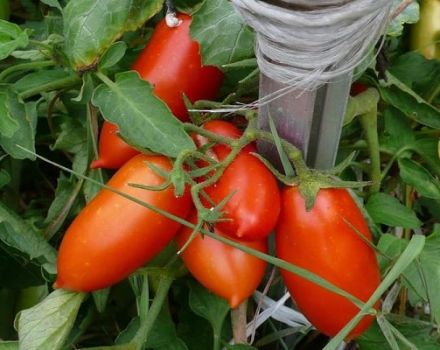
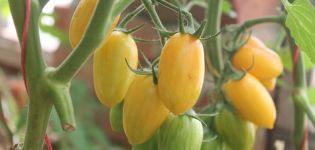
In the pictures, all the varieties are awesome, but in fact, who can tell? I live in the west of Ukraine, I looked at this variety. Does it mature in cold conditions or not? Thank you in advance.
This variety is early maturing. The berries ripen in 130-135 days. This is the main condition. The temperature of the surrounding air is also important: during the ripening period of grapes, it especially needs warmth and sun. In terms of climatic conditions, your region may be suitable for Monte Cristo. Just be sure to cover it for the winter, do not allow the vine to freeze.